How many types of tofu are there?
How many types of tofu are there?
There isn’t an organization tasked with cataloguing tofus, and many varieties aren’t eaten outside their village or province of origin, but I decided to take a shot. Here’s my running list of Chinese tofus, as well as links to Chinese wiki entries. (Use your browser to auto-translate.)
A Running List of China's 27+ Tofus
Keep scrolling for descriptions of each variety.
- 内酯豆腐 — silken (includes 豆花/豆腐脑, fresh tofu pudding, as well as 菜豆花, vegetable tofu pudding)
- 嫩豆腐 — soft
- 老豆腐 — firm (includes extra- , super- , and medium-firm, as well as variations like 豆泡 — fried tofu puffs)
- 冻豆腐 — frozen tofu
- 豆腐乳 — fermented tofu
- 毛豆腐 — hairy tofu
- 臭豆腐 — stinky tofu
- 豆腐干 — pressed tofu (includes 卤汁豆干, stewed, and 烟熏/香干, smoked)
- 零食豆干 — pressed tofu snacks (distinct from pressed tofu for cooking)
- 千张/干豆腐/豆腐皮 — tofu sheets (includes 豆腐丝 — shredded tofu sheets)
- 素鸡 — Shanghai tofu
- 霉千张 — fermented tofu sheets
- 油豆皮/腐竹 — yuba/tofu skin/tofu sticks
- 千页豆腐 — spongy tofu
- 大方手撕豆腐 — hand-ripped tofu
- 荞灰豆腐 — charcoal tofu
- 爆浆小豆腐 — exploding juice tofu
- 青岩烟熏豆腐 — Qingyan smoked tofu
- 青岩豆腐 — Qingyan tofu
- 泡豆腐/脚板豆腐皮 — puffy tofu
- 金钱豆腐 — tofu coins
- 石屏豆腐 — Shiping (Yunnan) tofu
- 建水包浆豆腐 — Jianshui (Yunnan) juicy tof
- 腊八豆腐 — Anhui salted and smoked tofu
- 脆豆腐 — dried, porous tofu
- 平远红菌豆腐头 — Pingyuan county Red Mold Okara Tofu
- 黑豆豆腐— black soybean tofu
- 玉子豆腐 and 鸡蛋干 — egg tofu
- 猪血豆腐 — pig blood tofu
- 淀粉类 — Starch-Gelled Tofus (chickpea, rice, almond, peanuts, oatchestnut…)
Celebrate Tofu Tuesday?
Join George’s community of tofu lovers to receive news, tips, and tricks — direct to your inbox.
Success!
You're now a Soycerer
Here are descriptions of each variety:
Most entries are linked to a Chinese wiki post. Just click on the name of the variety. (Beware, the info quality varies.)
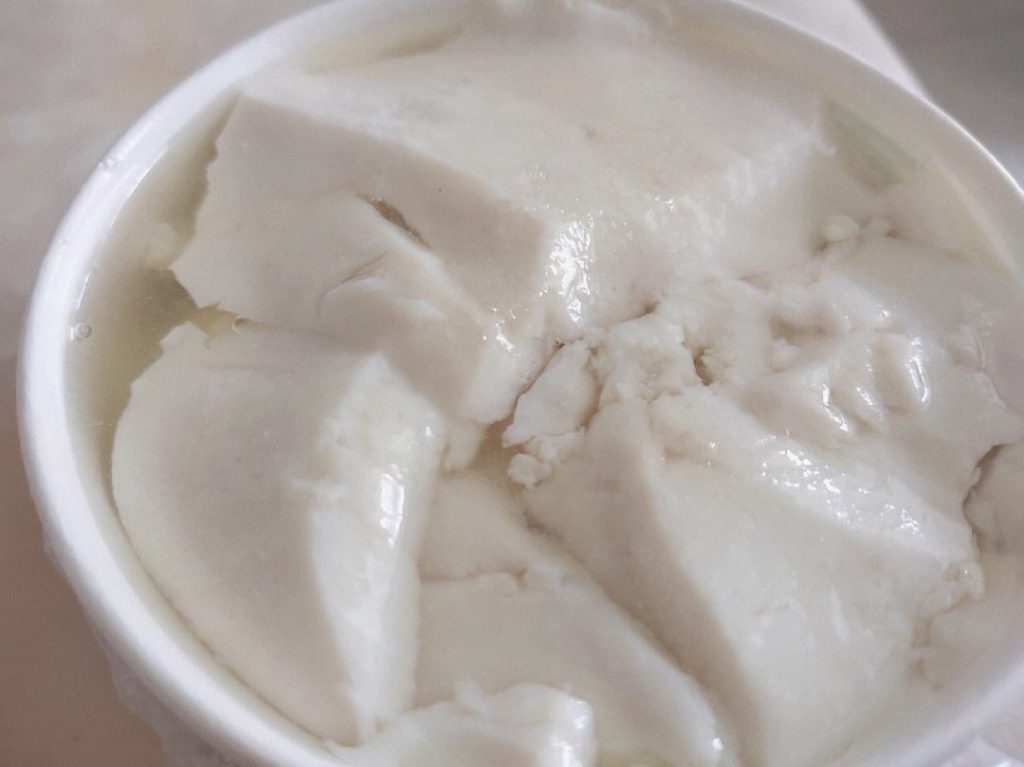
Drop something sour or minerally into fresh, hot soymilk and it’s proteins will coagulate, or bind together, into soft, pillowy curds. Left as is, these curds will coalesce into silken tofu, or tofu pudding. This delicacy is eaten for breakfast around China, generally under the names 豆腐脑 doufunao or 豆花 douhua. Silken tofu is the mother of most other varieties, which are made by pressing these curds into a block or sheets. In western supermarkets, it’s often sold in shelf-stable cartons.

Soft tofu is is made by pressing silken tofu curds into a soft block. Another Chinese name is 南豆腐 nandoufu, or southern tofu. (Soft tofu is especially popular in the southeastern provinces of Guangdong and Fujian.)
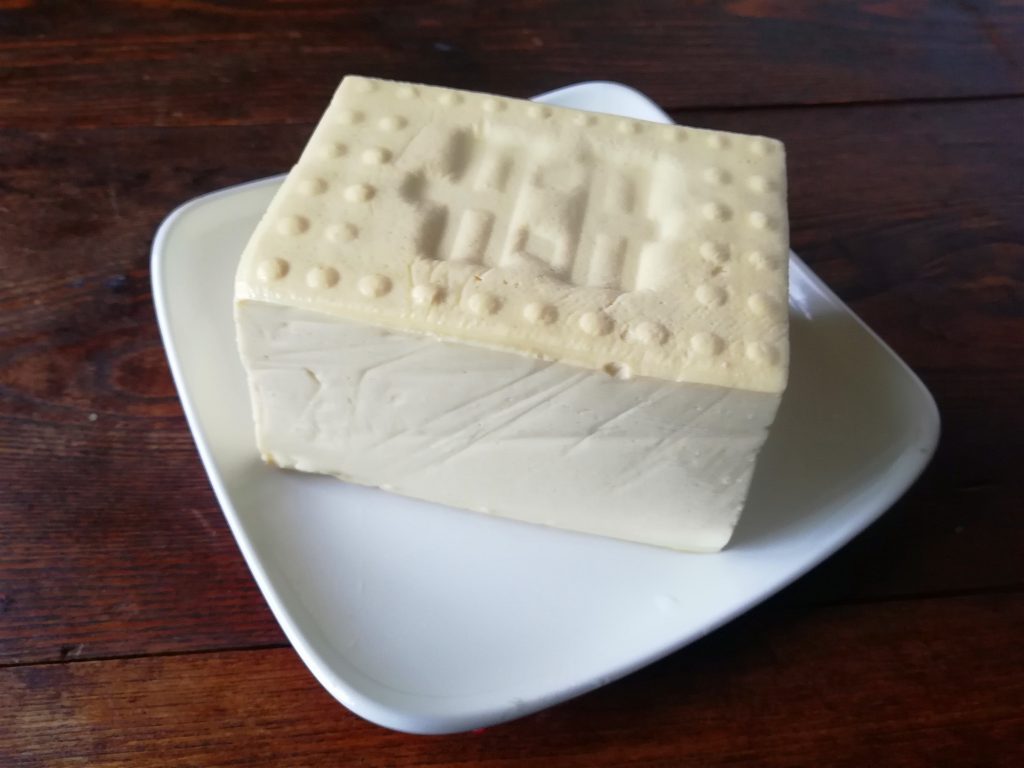
Firm tofu is made by pressing silken tofu curds into a firm block. Despite its nickname 北豆腐 beidoufu, or northern tofu, this is probably the most popular variety outside of all but Guangdong and Fujian provinces. Subvarieties include 豆泡 doupao or fried tofu puffs, as well as the American medium-firm, extra-firm, and super-firm products.
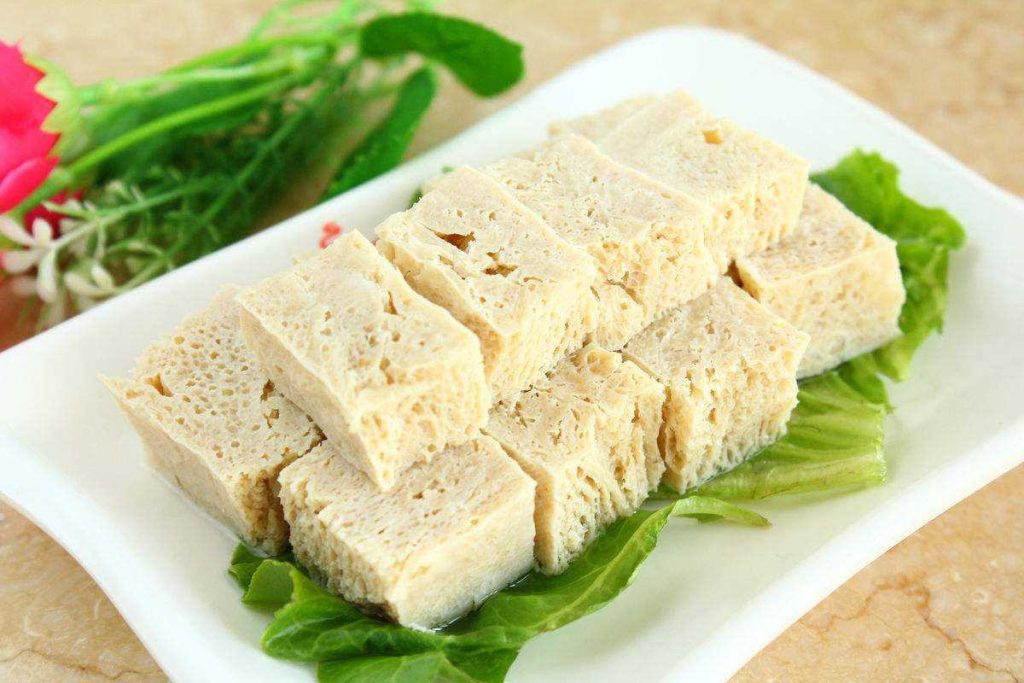
Freezing firm tofu ruptures it’s delicate curd structure and produces and hole-y, porous delicacy. In China, frozen tofu is usually stewed or eaten in hot pot.

Furu is the flavor king of tofu. Made by molding cubes of firm tofu and then ripening them in a mixture of spices, alcohol, and seasonings, it can develop notes ranging from provel to blue cheese, salty and astringent to warm and creamy. Fermented tofu is extremely rich in umami. Due to its softness and potent flavors, it’s usually eaten as a seasoning, rubbed onto pastries, spooned on top of gravies, or mixed into dipping or stir fry sauces. It’s eaten all over China, and every city, town, and village makes it their own way.
Fermented tofus can be roughly classified into a few subvarieties:
- Whites (白腐乳 baifuru) are unadorned. Because there is nothing to temper their flavor, they are some of the most funky. If you’ve never tried them before, the closest comparison might be a potent white miso.
- Reds (酱豆腐 jiangdoufu or 南乳 nanru) are made by adding koji to the fermentation process. This imparts a blood red color and wintery spiced flavor.
- Chili Oil (红油 hongyou) varieties replace an alcoholic brine with chili oil. This adds a creamy mouthfeel, mellows the fermented flavors, and imbues a myriad of aromas from the chili oil itself. (If you’re not familiar with fermented tofus, these can be the easiest foot-in-the-door.)
- Glutinous Rice Wine (酒酿 jiuniang) varieties are made by brining the tofu in a sweet rice wine.
- Stinky (青方 qingfang) combines the molding process of fermented tofu with the putrid brining process of stinky tofu (see below.) It is very, very stinky, which is beloved by many people around the Beijing area.
- Cabbage (白菜腐乳 baicai furu) are made by dry-aging the molded tofu with cabbage, rather than using a brine.
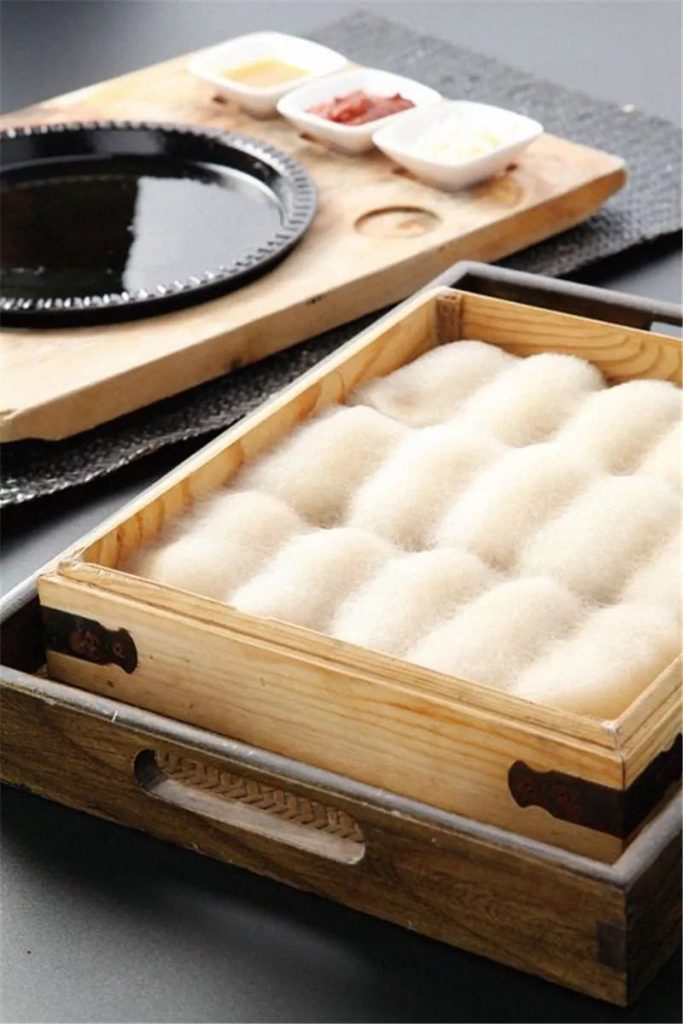
Maodoufu follows the molding step of fermented tofu but isn’t brined. Instead, fur-cloaked chunks of tofu are fried and/or stewed. The molding process breaks down a lot of the protein in tofu into savory amino acids, while rupturing the curded structure. The result is a dryer tofu with a sometimes sinewy texture, but that isn’t stinky.
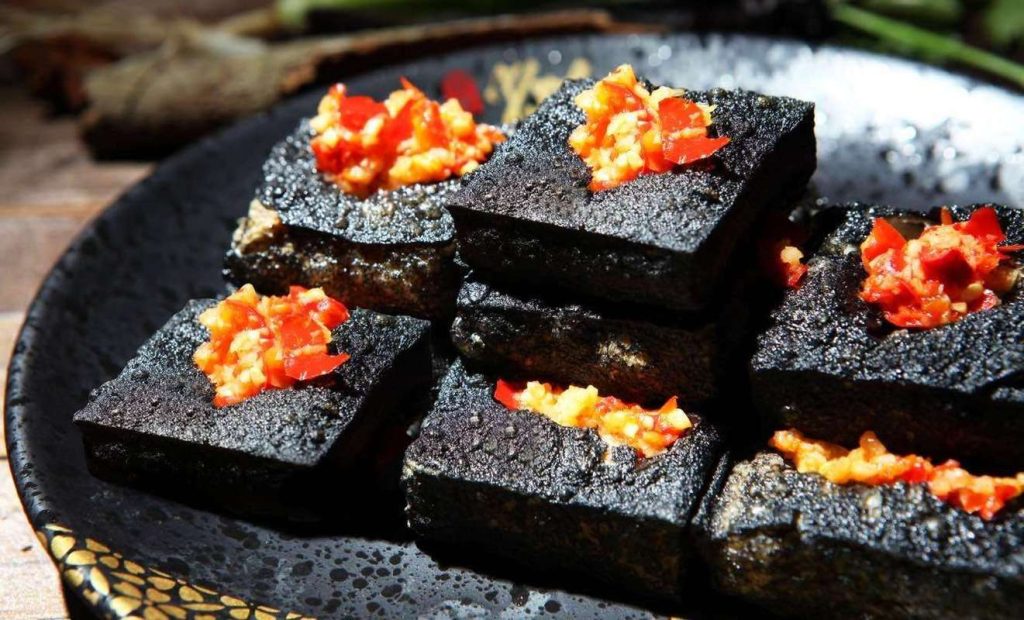
Lovers say it “smells stinky but tastes fresh.” The most famous type of stinky tofu comes from Changsha and sports the black/deep blue color of mold. Taiwan also has several popular varieties. Both tend to be fried, grilled, or stewed, served street-side on a stick. Unlike fermented tofu, which is molded and then brined, stinky tofu is just brined.
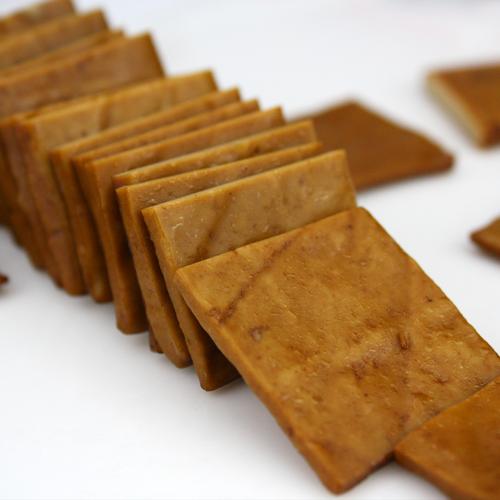
Dougan is a relative of extra-firm tofu, pressed very dry and then smoked, salted, or stewed. While low in water content, many varieties are tender, rather than tough. The ingredient is eaten in most major regions of China, used in stir-fries, dumpling filling, and on the grill.
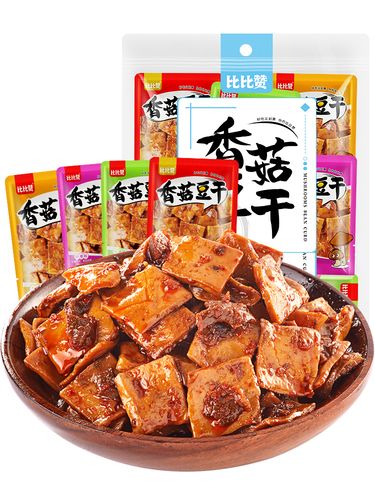
A high-protein snack, generally made from soy protein, not silken tofu curds, and seasoned with flavors ranging from five-spice, to mala, to paojiao (pickled chilies). It’s eaten around China and is sold at most Chinese grocery stores in shelf-stable, single-serving packets.

Qianzhang, also called 干豆腐 gandoufu, 豆腐皮 doufupi, and 薄百页 baobaiye, are cardstock-thin sheets of ground then pressed silken tofu curds. Due to their minimal moisture content, qianzhang are the most protein-dense tofu. They also have very little beany flavor. They’re most commonly eaten sliced in cold salads (as 豆腐丝 doufusi, or tofu noodles), and are popular in China’s northeast in fresh vegetable rolls and wet stir-fries.
Celebrate Tofu Tuesday?
Join George’s community of tofu lovers to receive news, tips, and tricks — direct to your inbox.
Success!
You're now a Soycerer
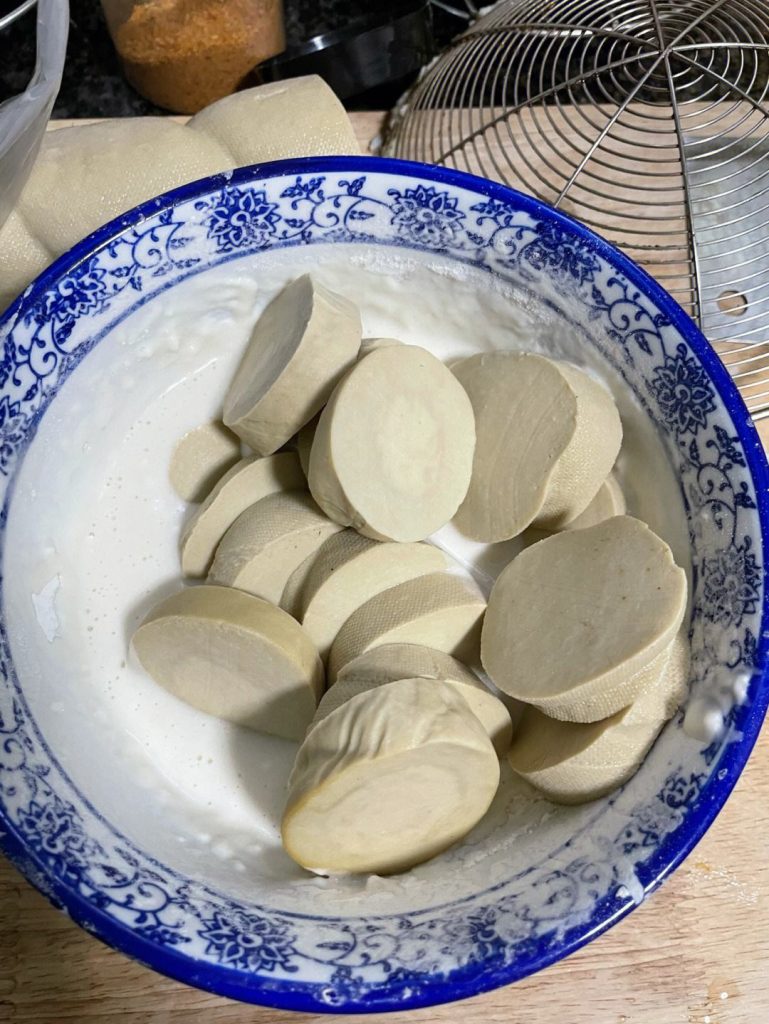
Suji is made by brining shredded tofu sheets in alkaline solution, then pressing them into a log structure. This transforms the old ingredient into a completely new form, while maintaining the ultra-high protein content and low beany taste. Shanghai tofu is usually fried and stewed, which gives it an indulgent creamy juiciness. Despite it’s deliciousness, it is rarely eaten outside the Shanghai region, except occasionally in Taiwan.
NOTE: some products labeled as suji are actually just pressed tofu, but you can easily tell by comparing photos.

Meiqianzhang is made by acidifying tofu sheets in a low pH brine (4-4.5), then molding them on top of rice stray for 2-7 days. It’s originally from the city of Shaoxing, near Shanghai, and doesn’t seem to be eaten outside that region.
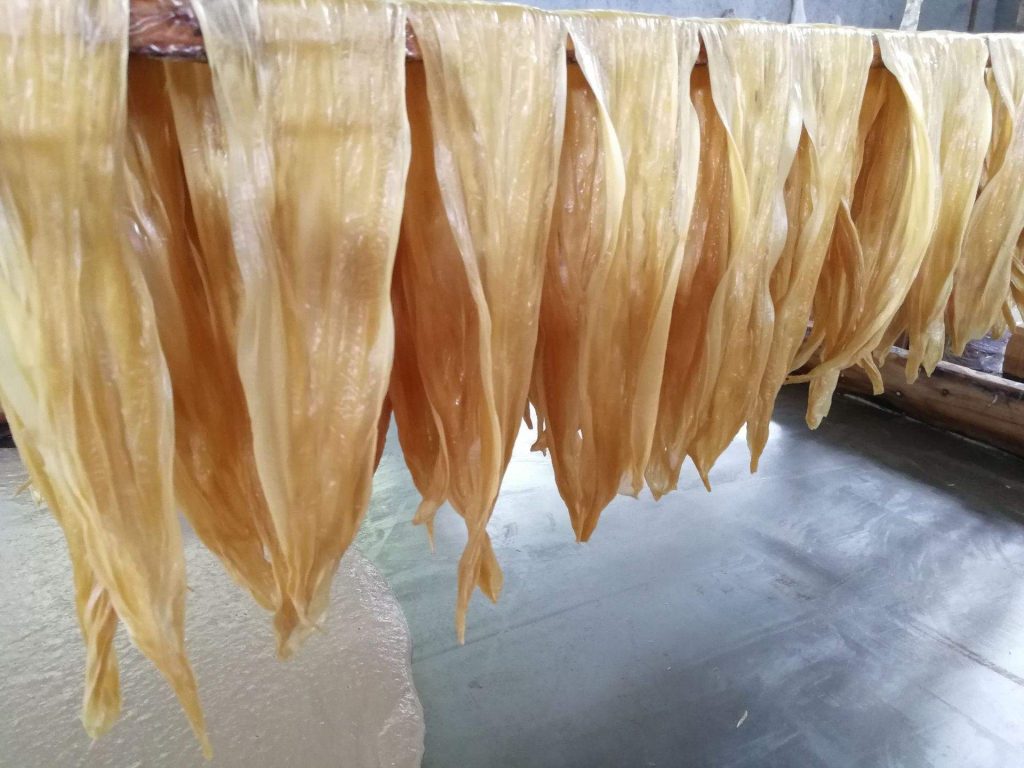
Yuba or tofu skin is the high protein film that forms atop heated soymilk. It’s eaten as sheets or rolled into 腐竹 fuzhu, tofu sticks, which are usually dried or frozen to preserve shelf life. Yuba sheets are often used as a wrap for other fillings, then fried and/or steamed. They’re also eaten with hotpot. Tofu sticks are usually sold dried and used in cold salads or light stir fries. (Unlike most of the tofus on this list, besides silken, soft, and firm, yuba is not strictly Chinese. It’s eaten within other East and Southeast Asian cuisines.)
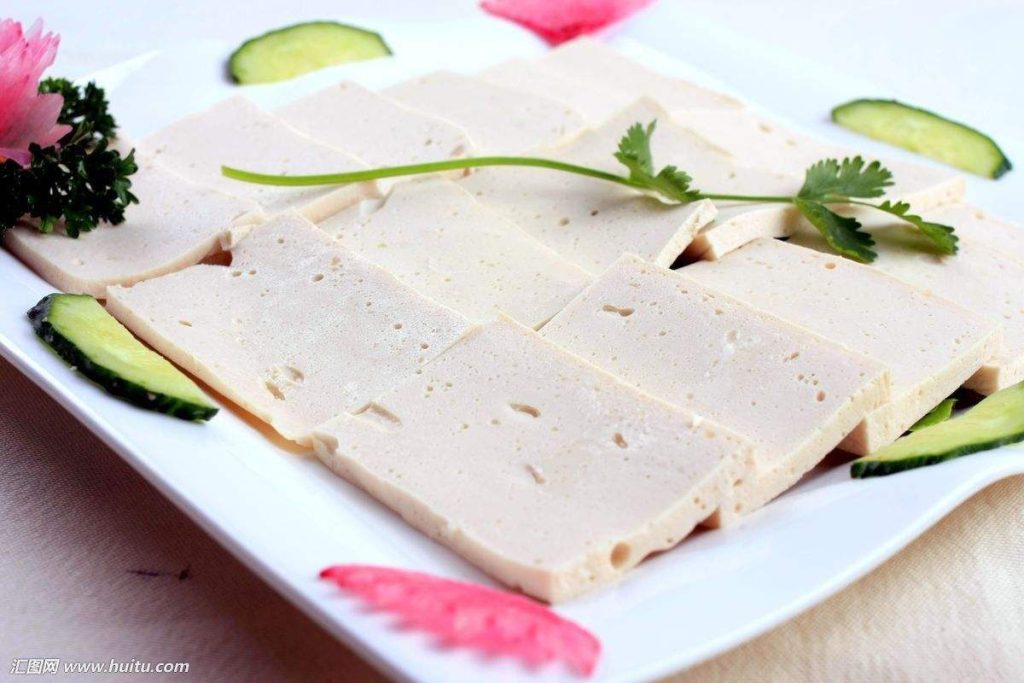
Qianye is a special type of tofu, made directly from soy protein, not whole beans. Its uniform texture is tender, chewy, and fishcake-like, which is described in Mandarin as simply the letter “Q”. One of the most forgiving tofus, it can be frozen indefinitely with little change to its structure, and it rarely breaks apart when cooking. Spongy tofu is usually stir fried, but it can also be grilled or baked. It’s most common in northern China and in Taiwan, where it’s called 百叶豆腐 baiyedoufu. While I haven’t found great sources,spongy tofu was probably developed in Taiwan after Japanese annexation during WWII.
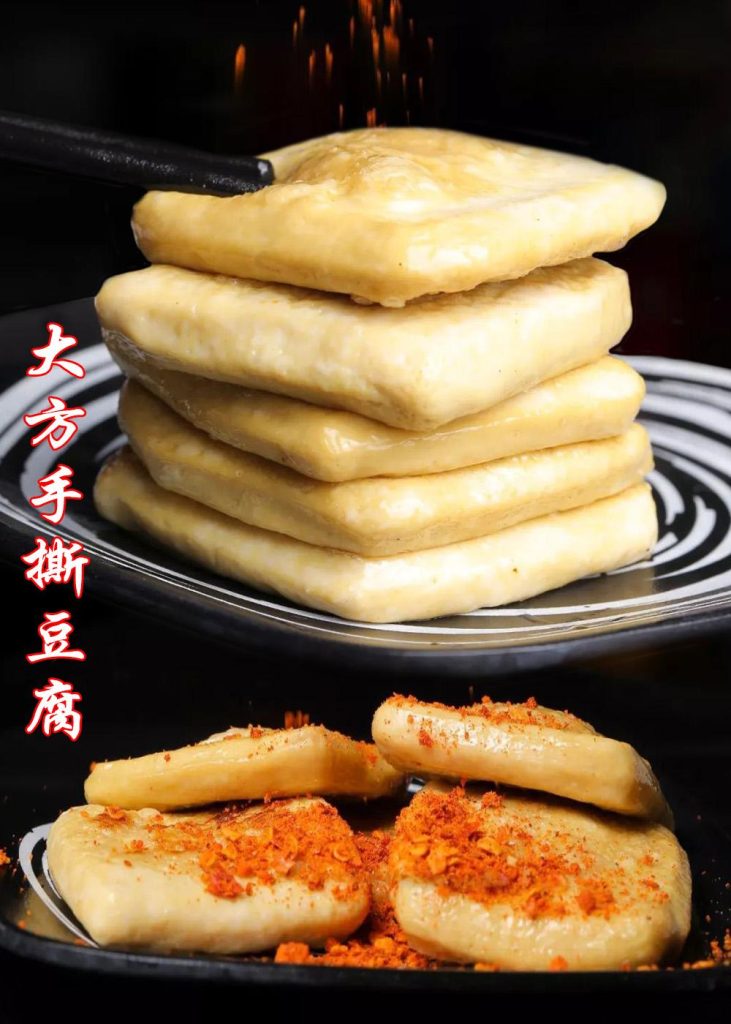
Dafang shousidoufu is a specialty of the city of Bijie in northwestern Guizhou Province. While sometimes referred to as a “stinky tofu,” it’s not actually fermented, but rather prepared similarly to pressed tofu and then dusted with edible alkali. This gives it a yellow tinge and slightly sulfurous flavor, as well as a tender texture. Hand-ripped tofu, contrary to the name, is not usually hand ripped. Instead, it’s grilled over charcoal and eaten with seasoned chili powder to dip.
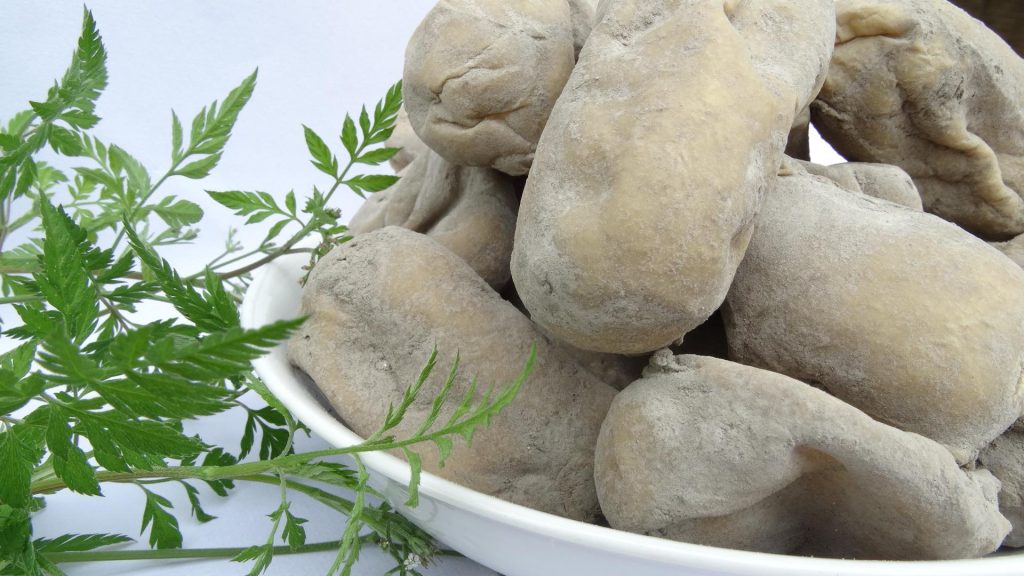
Qiaohui doufu is also a specialty of Guizhou Province, but from either the town of Bianyang or Wuchuan. It’s made by cooking firm tofu in charcoal ash for several hours. The charcoal ash is slightly alkaline, tenderizing the tofu and producing a puffy skin. The tofu is remarkably dense yet supple.
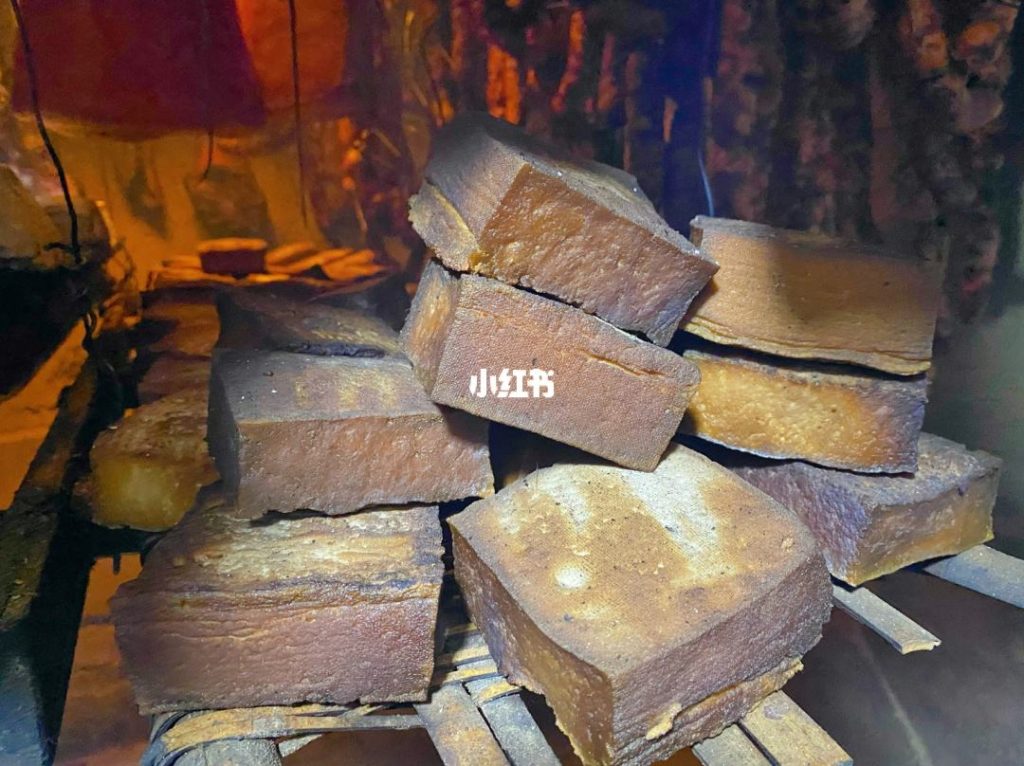
17. 贵州烟熏豆干 guizhou yanxun dougan — Guizhou Smoked Tofu
Guizhou smoked tofu is unlike other pressed tofu in that it has an extremely dense, cohesive mouthfeel, kind of like a hard cheese. It’s sold on the street in places like the ancient village of Qingyan.
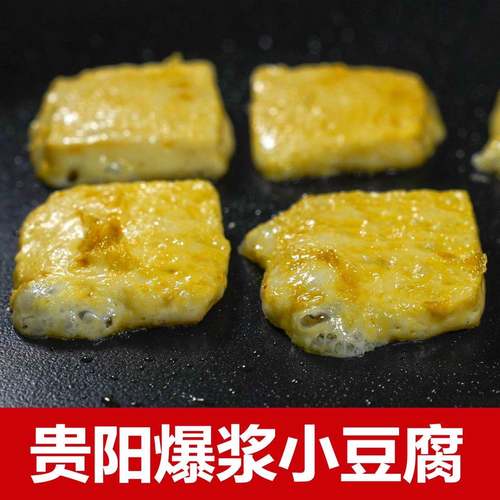
This is another tofu from the city of Bijie, in northwestern Guizhou Province, made by pressing very tender silken tofu curds into 3-4mm thick sheets, then dusting with salt, MSG, and sodium carbonate. The resulting tofu, when pan-fried, bubbles and releases a delicious juice. This tofu is usually served with seasoned chili powder to dip.
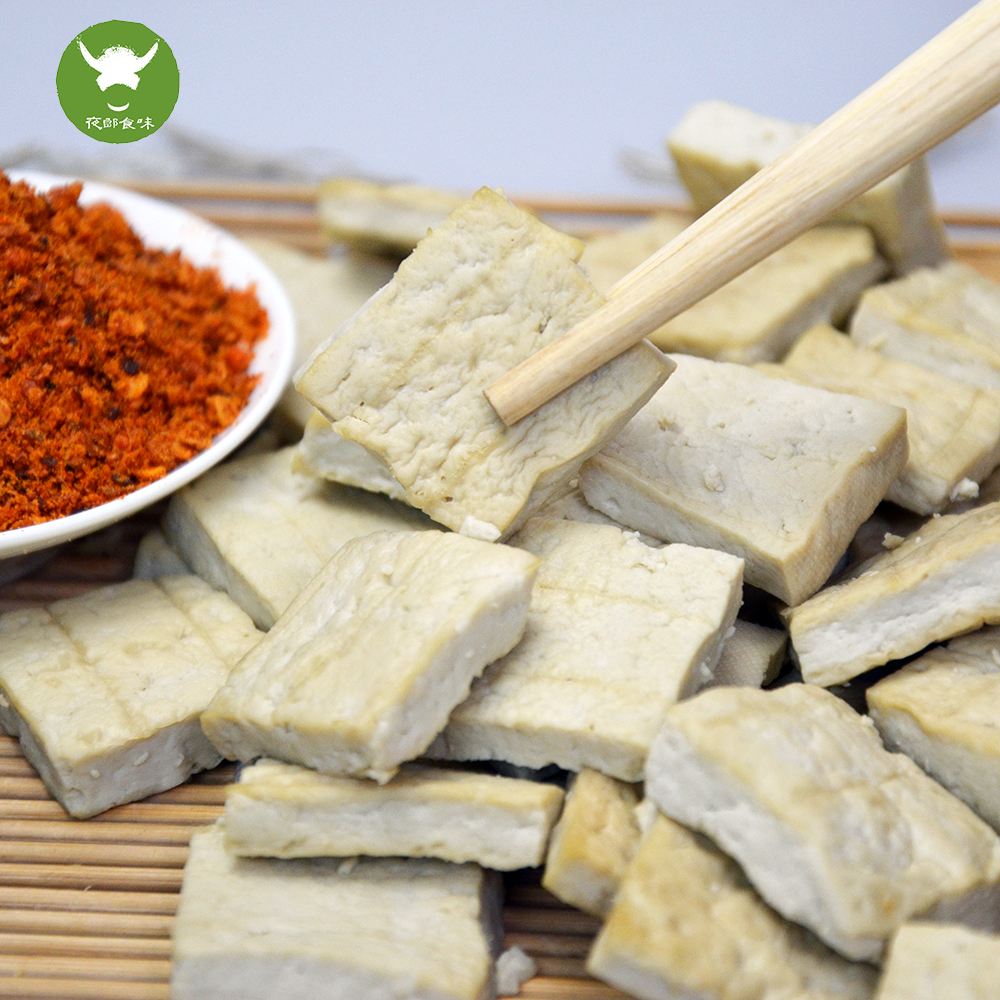
Yet another variety of tofu from Guizhou, slightly dried to give it a denser, firmer mouthfeel. It’s usually sliced and grilled or fried, dipped in seasoned chili powder.
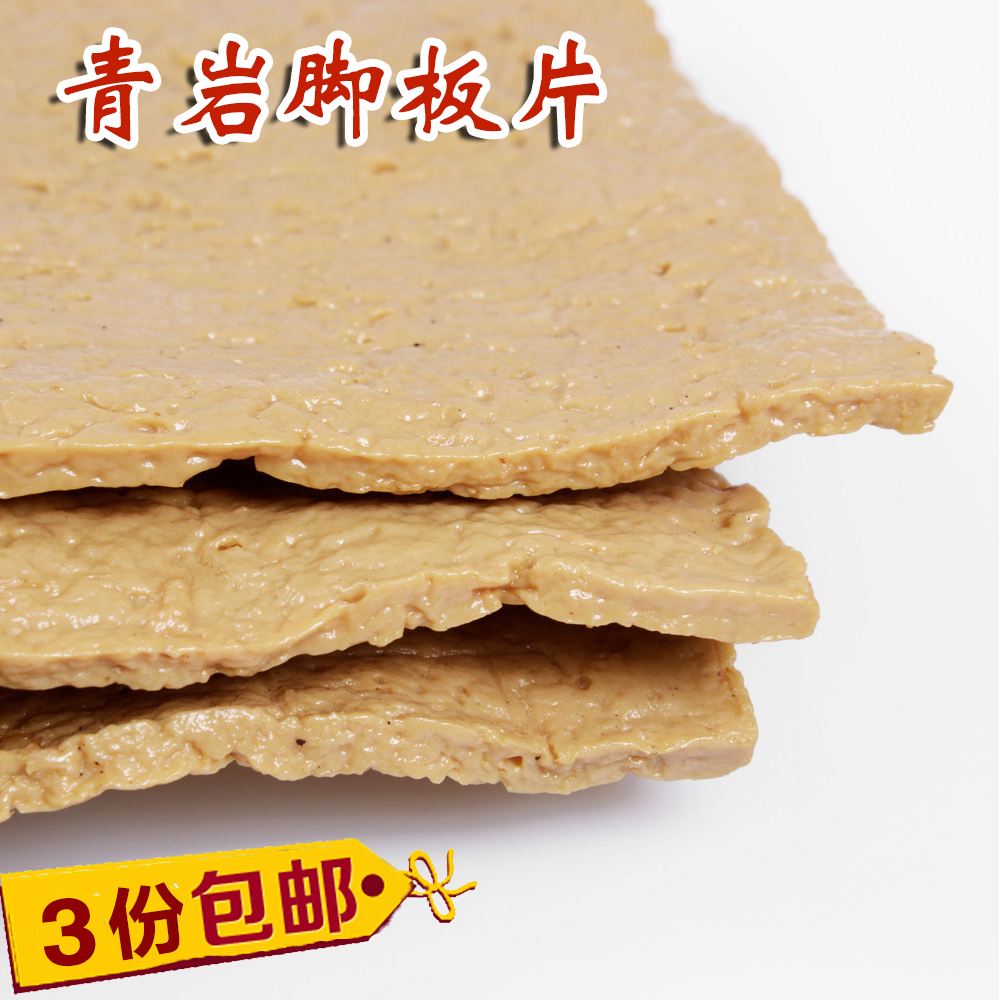
Yet another variety of tofu from Guizhou, made by pressing tofu into a 3-4mm thick sheet, dehydrating it, then baking it in tiny pebbles. This unique baking process causes the tofu to puff up and become bubbly. It’s later rehydrated and added to stir fries, soups, or cold dishes.
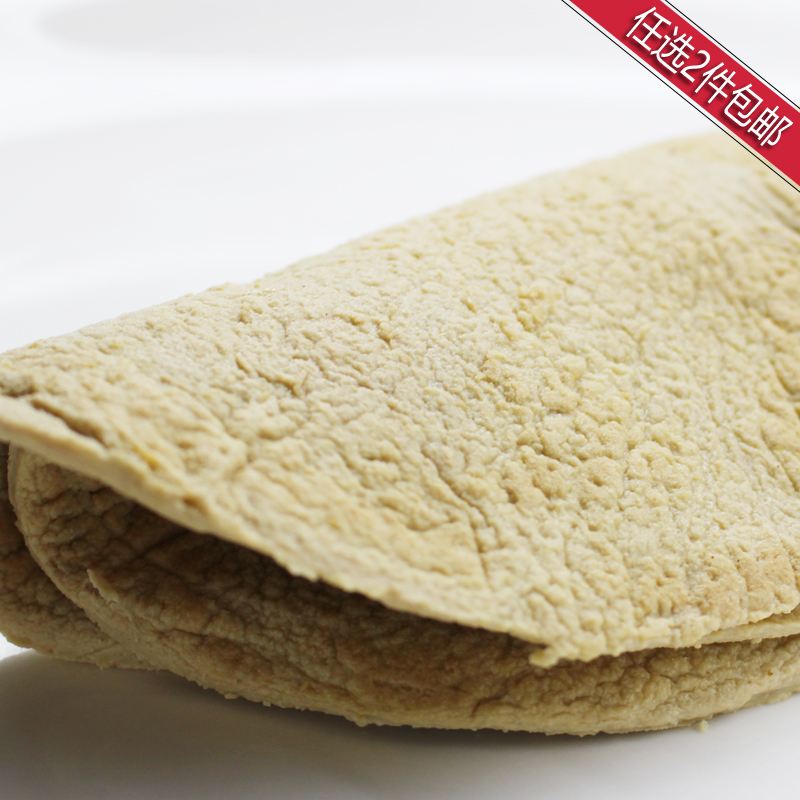
21. 金钱豆腐 jinqiandoufu — Tofu Coins
Yet another variety of tofu from Guizhou. This one is like a thin tofu pancake. I wish I remembered more. I can’t find more information on the Chinese internet.
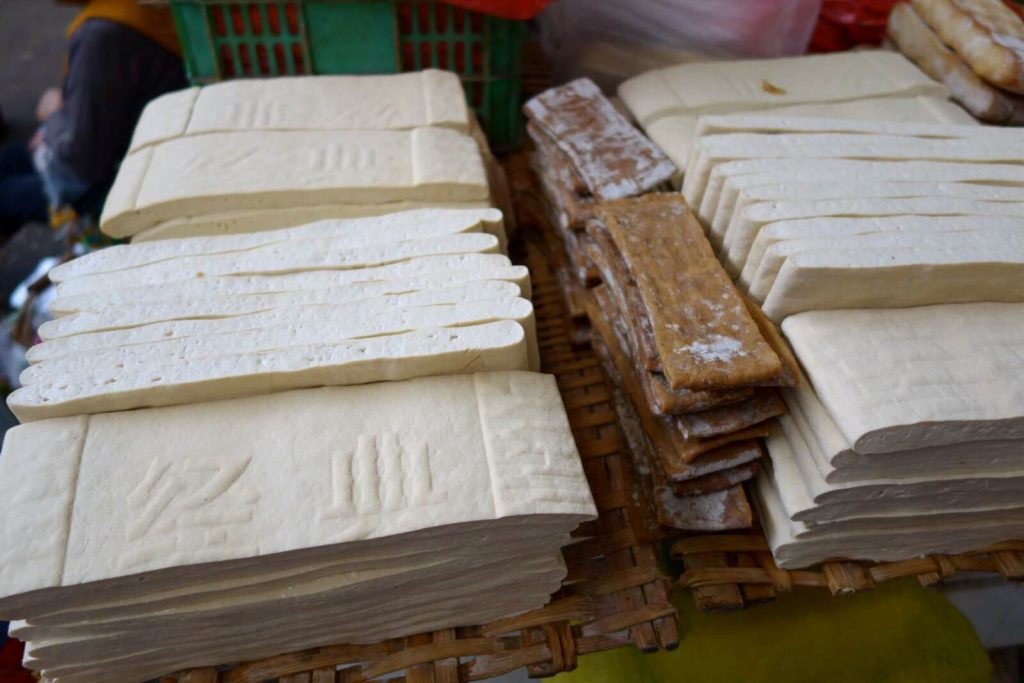
A well-known specialty of Shiping in Yunnan Province, with a slightly tangy taste.
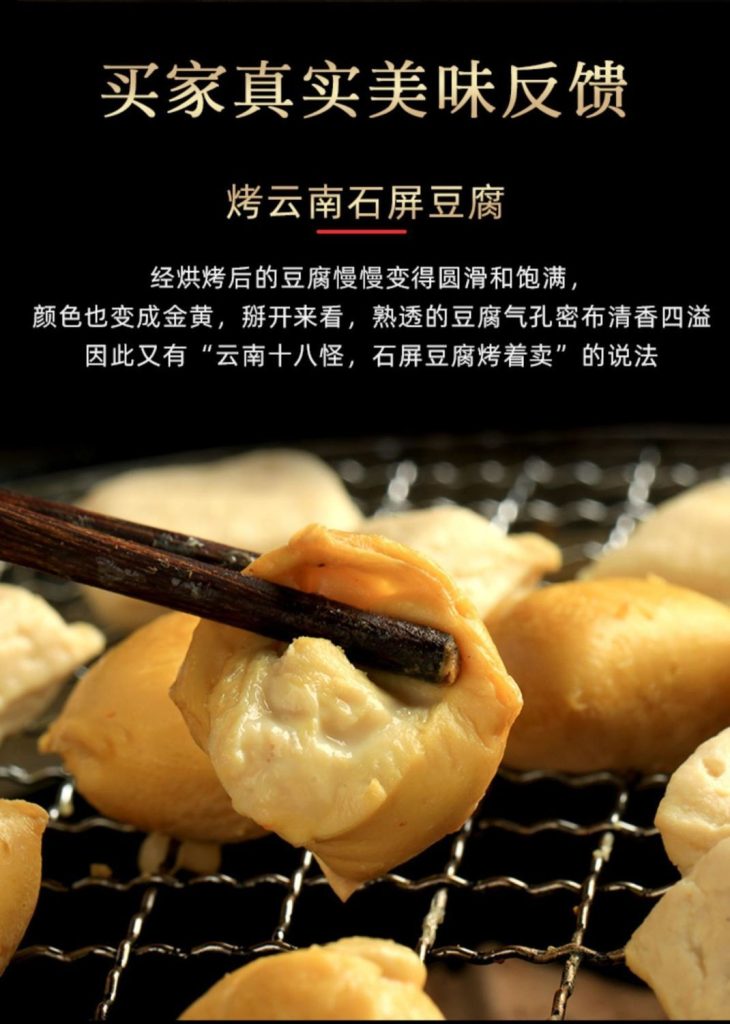
Another type of tofu from Shiping, Yunnan. This one is usually grilled or fried and melts inside.
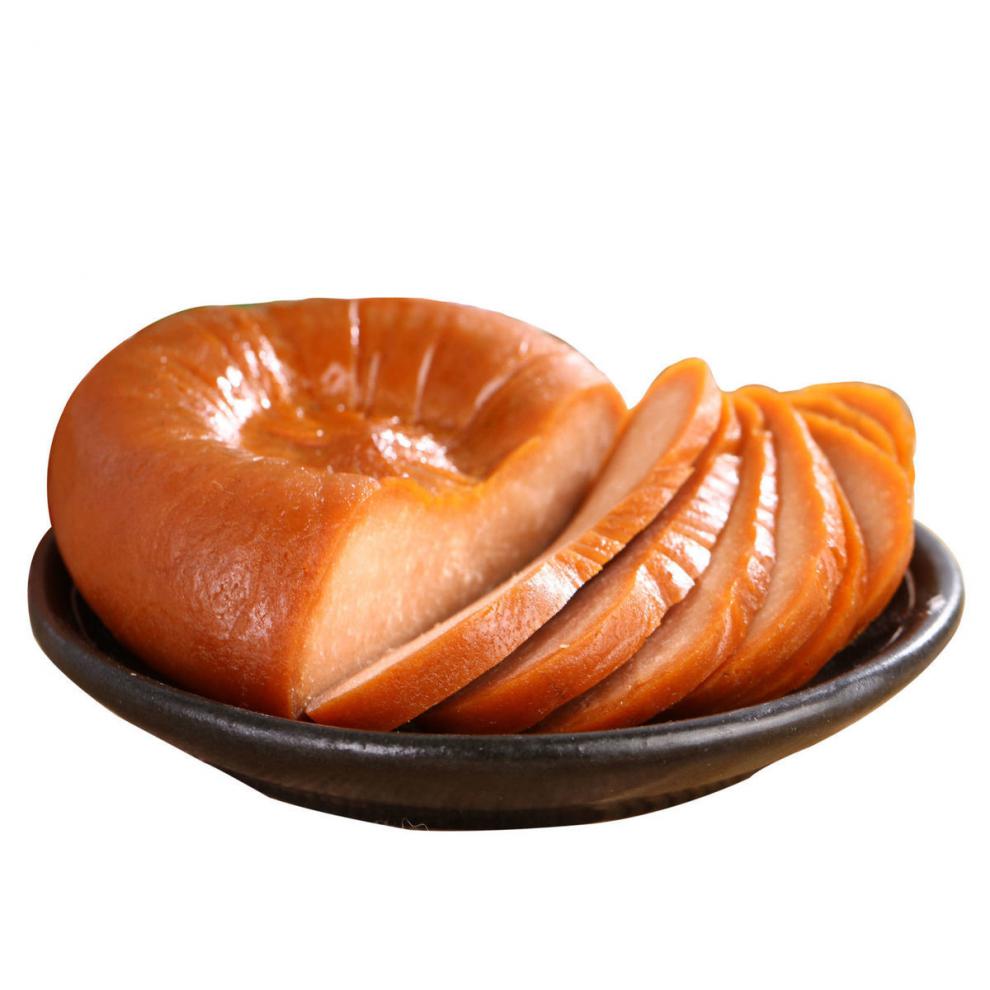
Laba tofu is a special variety from Anhui Province with a pink coat resembling ham. It’s very dense and salty.
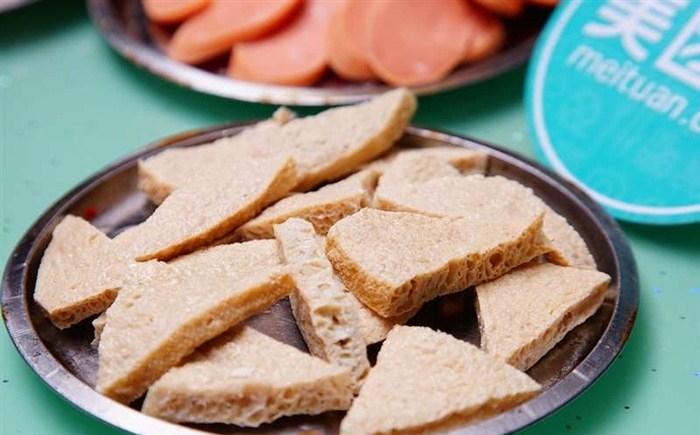
I tried cuidoufu once in Beijing and later in Shandong Province, but can’t find any information online. It had a texture between suji and a type of bready Chinese seitan called kaofu. Both times, it was fried and braised.
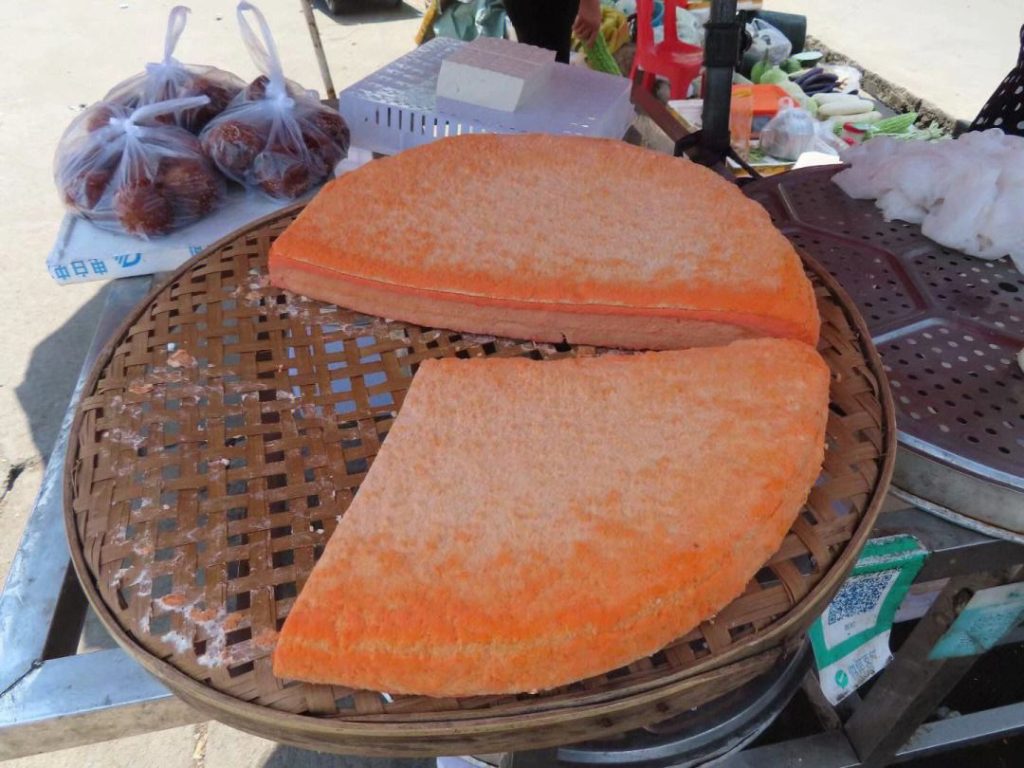
26. 平远红菌豆腐头 pingyuan hongjun doufutou — Pingyuan County Red Molded Okara Tofu
After straining fresh soymilk, you’re left with soymilk dregs, or okara. In Pingyuan county in the city of Meizhou, these dregs are dried in wok, pressed into a cake, and sprinkled with red mold. Two days later, a dense, cohesive tofu emerges. This one-of-a-kind food is often sliced and stir fried, like a firm or pressed tofu. In 2009, it joined the Meizhou city list of items of “Intangible Cultural Heritage”.
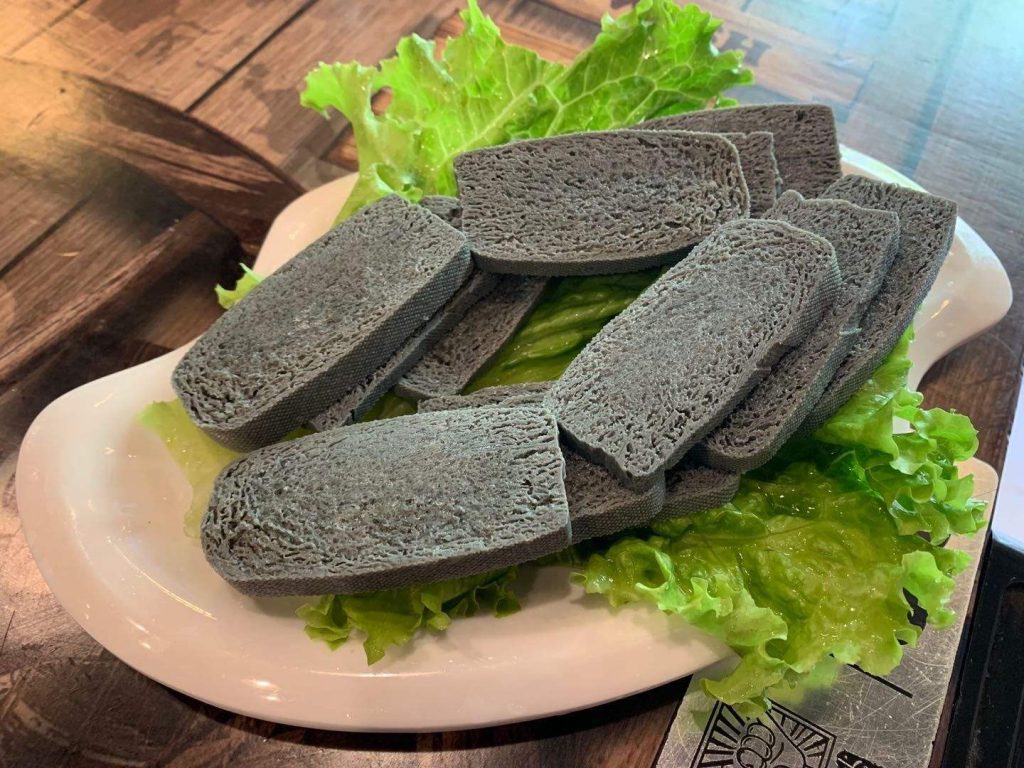
27. 黑豆豆腐 heidou doufu — Black Soybean Tofu
When you see a Chinese dish listing “black beans,” chances are it’s either a black soybean or fermented white soybeans. Since black soybeans have all the same properties of their counterparts, they can be used to make any tofu. That said, it’s most common to see them as douhua tofu pudding or doufusi shredded tofu sheet noodles.
28. 玉子豆腐/鸡蛋干 yuzidoufu/jidangan — Egg Tofu
China has a couple tofu varieties made with eggs instead of soybeans.
29. 猪血豆腐 zhuxuedoufu — Pig Blood Tofu
There’s also one popular variety made with congealed pig blood.
30. 非大豆豆腐 feidadou doufu — Non-Soy Tofus
Soy is unique among legumes for it’s low starch content. This turns out to be important for making tofu, as starch molecules physically block proteins from coagulating together. While there are non-soy tofus in China, they aren’t curded, but rather starch-gelled. They taste delicious. Just know they are very different sorts of ingredients. A few types include:
- 米豆腐 — Rice Tofu (popular in Guizhou Province)
- 花生豆腐 — Peanut Tofu (popular in Fujian Province and Taiwan)
- 苦槠豆腐 — Oatchestnut Tofu (probably from Anhui Province)
- 杏仁豆腐 — Almond Tofu (popular in Guangdong Province)
- 鹰嘴豆腐 — Chickpea Tofu (popular in Yunnan Province)
In the last couple years, Mary’s Test Kitchen and Big Mountain Foods have found a way to make curded tofus out of pulses, from red lentils to fava beans. The process involves blending the pulse milk, allowing it to rest, then straining out the starch. The milk then curdles like soy. These are delicious, but not eaten in China. (At least not yet!)
Celebrate Tofu Tuesday?
Join George’s community of tofu lovers to receive news, tips, and tricks — direct to your inbox.
Success!
You're now a Soycerer
2 Comments
Jeff · April 3, 2023 at 12:07 am
Looking forward to using your recipes.
George Stiffman · April 12, 2023 at 5:19 pm
Thanks Jeff, looking forward to sharing them soon.
Comments are closed.